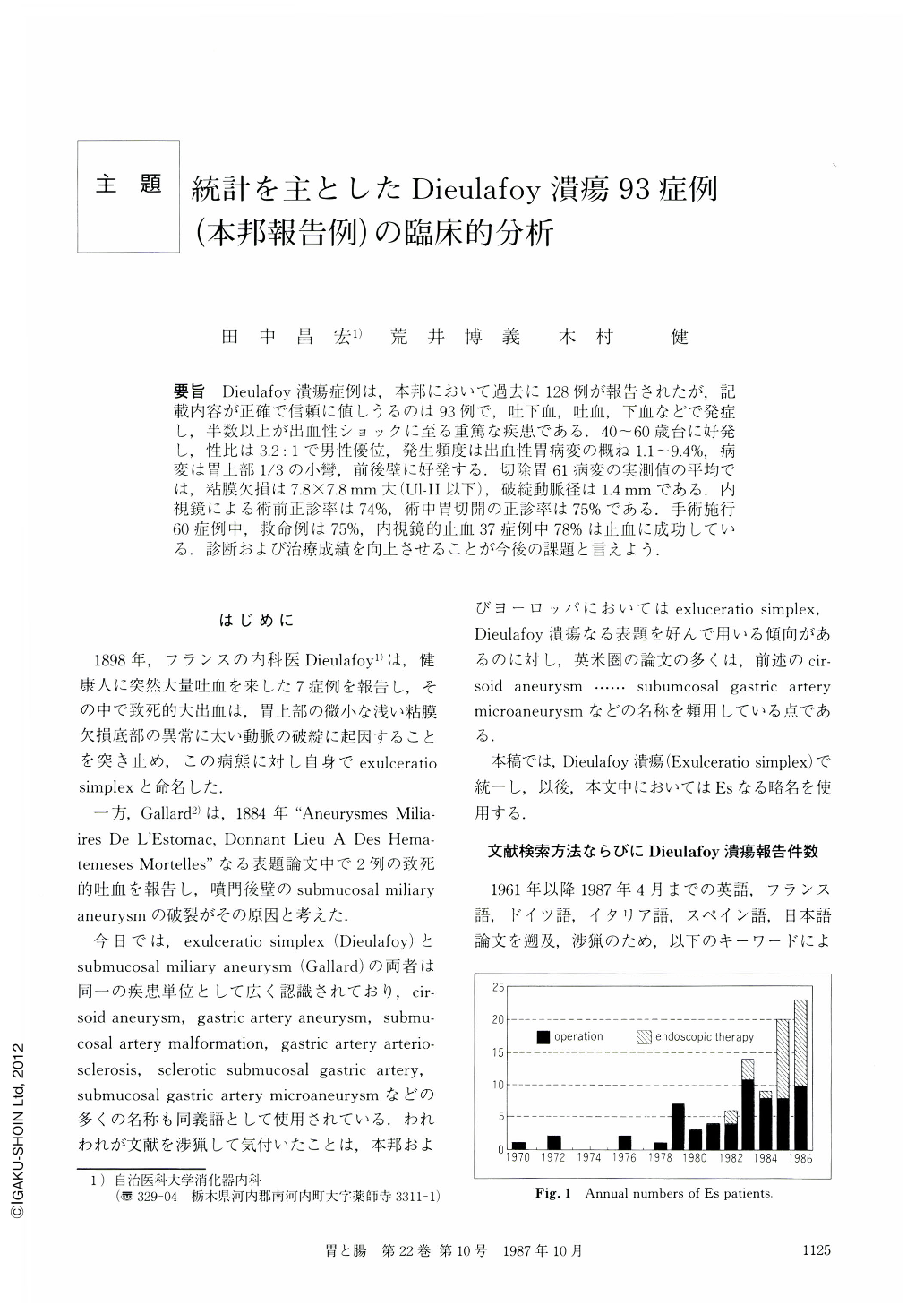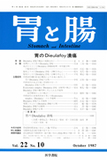Japanese
English
- 有料閲覧
- Abstract 文献概要
- 1ページ目 Look Inside
要旨 Dieulafoy潰瘍症例は,本邦において過去に128例が報告されたが,記載内容が正確で信頼に値しうるのは93例で,吐下血,吐血,下血などで発症し,半数以上が出血性ショックに至る重篤な疾患である.40~60歳台に好発し,性比は3.2:1で男性優位,発生頻度は出血性胃病変の概ね1.1~9.4%,病変は胃上部1/3の小彎,前後壁に好発する.切除胃61病変の実測値の平均では,粘膜欠損は7.8×7.8mm大(Ul-Ⅱ以下),破綻動脈径は1.4mmである.内視鏡による術前正診率は74%,術中胃切開の正診率は75%である.手術施行60症例中,救命例は75%,内視鏡的止血37症例中78%は止血に成功している.診断および治療成績を向上させることが今後の課題と言えよう.
Ninety-three out of 128 patients reported in Japan as having Dieulafoy's ulcer of the stomach were objectively judged accurate and authentically described. These 93 cases were examined with respect to the clinical features. While only 25 of 93 cases were reported during 13 years following 1970 when the first case report of Dieulafoy's ulcer was made in Japan, the rests were done in the recent past five years. The number of cases annually reported has extremely increased year by year. The incidence of Dieulafoy's ulcer was considered between 0.2 and 9.4% among the gastric diseases causing massive bleeding. The average age was 53.9 years (range 11 to 85). Male was dominant, 3.2 times as many as female. Reflecting massive bleeding from the stomach, symptoms like hematemesis alone (33%), melena alone (23%) or both of these (41%), were found in almost all cases (97%). Hypovolemic shock was seen in about half of the patients. Correct diagnosis was made in 74% of the patients who underwent preoperative fibergastroscopy. However, the bleeding point was revealed intraoperatively in only three quarters of these patients. Examination of the resected stomach showed that the lesion was located on the posterior or anterior wall close to the lesser curvature in the upper third of the stomach. The characteristic appearance was “tiny protrusion at the bottom of superficial ulcer”. The average diameters of the superficial ulcer and the ruptured submucosal artery, based on the figures in each papers, were 7.8 mm and 1.4 mm, respectively. Sixty-seven operative procedures in 60 patients were performed with a successful rate of 74% (total gastrectomy; 82%, subtotal gastrectomy; 73%),Endoscopic hemostasis by injecting ethanol or hypertonic saline epinephrine, or electrocoagulation under endoscopic observation was successfully done in 29 (78%) of 37 patients.
It is important to note that endoscopic injection therapy did not successfully stop bleeding in 22% of the patients and that the death rate was 5% even among the surgically treated patients. In order to achieve more satisfactory treatment, making an accurate diagnosis is mandatory followed immediately by safe therapeutic procedures.

Copyright © 1987, Igaku-Shoin Ltd. All rights reserved.


